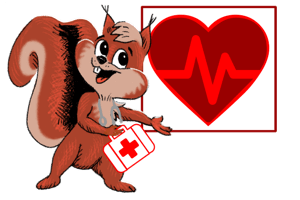"TMJ" stands for temporomandibular joint, or the jaw joint. The TMJs are the small joints in front of each ear that attach the lower jaw (mandible) to the skull. They allow you to perform such functions as opening and closing your mouth, chewing, speaking, and swallowing.
TMJ diseases and disorders refer to a set of conditions, manifested by pain in the area of the jaw and associated muscles and limitations in the ability to make the normal movements of speech, facial expression, eating, chewing, and swallowing. Conditions that routinely affect other joints in the body, such as arthritis and trauma, also affect the TM joint.
More information
Subcategories 1
Related categories 3
Sites 17
General information about the disorder and its symptoms. Includes a referral area which tells the percentage of the doctor's practice that is devoted to TMJD patients.
Non-profit organization of maxillofacial, orthopedic, plastic/reconstructive and oral and maxillofacial surgical specialists dedicated to promoting education, research, and patient services concerning orthopedic disease of the temporomandibular joint (TMJ). Includes diagnosis and management guidelines, video clips and a membership list.
8 MRI's with case reports, animated to show the particular problem.
A comparison of two groups of patients.
Compares the outcomes of two sets of patients.
The Craniofacial Pain Center of Tufts University School of Dental Medicine is devoted to the diagnosis and management of temporomandibular disorders and chronic head, neck and facial pain. Find patient and professional information and educational programs.
Explains the symptoms and treatment options.
The Jaw Joints and Allied Musculo-Skeletal Disorders Foundation is a non-profit advocacy organization that focuses on prevention, awareness, education, and research.
Long term study of 466 patients in 5 treatment groups to determine the outcome of Silastic, permanent Silastic, or Proplast implants to replace painful disc displacements compared to nonimplant surgery or nonsurgical modalities.
Evaluates the cellular tissue response to disc material by its changes and fragmentation.
The management of failed Proplast/Teflon, Silastic, and Christensen Fossa implants by removal, joint debridement, recountouring of the articulating surfaces, and placement of a temporalis muscle/fascia flap for joint lining including the outcome of this protocol.
Examines self-reported systemic and immune mediated disorders in patients with Proplast-Teflon TMJ implants by comparing them to a group who was not exposed to these alloplastic implants and to a group who has had these implants removed.
The new technique of tissue-engineered growth of cartilage for the replacement of discs and its effectiveness.
Provides information to patients, health professionals and the public, and advocates for research and treatment.
42 consecutive patients had reconstruction using this prosthesis, and were followed for 5-8 years to determine the long term results.
Patient hosted, moderated discussion board on aspects of this disorder.
56 patients were treated nonsurgically and then evaluated at 10 years to determine if their pain, jaw dysfunction, and limiting of daily activities had improved. From PubMed.
(November 01, 2002)
The Craniofacial Pain Center of Tufts University School of Dental Medicine is devoted to the diagnosis and management of temporomandibular disorders and chronic head, neck and facial pain. Find patient and professional information and educational programs.
Patient hosted, moderated discussion board on aspects of this disorder.
Explains the symptoms and treatment options.
42 consecutive patients had reconstruction using this prosthesis, and were followed for 5-8 years to determine the long term results.
The management of failed Proplast/Teflon, Silastic, and Christensen Fossa implants by removal, joint debridement, recountouring of the articulating surfaces, and placement of a temporalis muscle/fascia flap for joint lining including the outcome of this protocol.
Long term study of 466 patients in 5 treatment groups to determine the outcome of Silastic, permanent Silastic, or Proplast implants to replace painful disc displacements compared to nonimplant surgery or nonsurgical modalities.
Compares the outcomes of two sets of patients.
Evaluates the cellular tissue response to disc material by its changes and fragmentation.
Examines self-reported systemic and immune mediated disorders in patients with Proplast-Teflon TMJ implants by comparing them to a group who was not exposed to these alloplastic implants and to a group who has had these implants removed.
The new technique of tissue-engineered growth of cartilage for the replacement of discs and its effectiveness.
A comparison of two groups of patients.
8 MRI's with case reports, animated to show the particular problem.
Non-profit organization of maxillofacial, orthopedic, plastic/reconstructive and oral and maxillofacial surgical specialists dedicated to promoting education, research, and patient services concerning orthopedic disease of the temporomandibular joint (TMJ). Includes diagnosis and management guidelines, video clips and a membership list.
General information about the disorder and its symptoms. Includes a referral area which tells the percentage of the doctor's practice that is devoted to TMJD patients.
The Jaw Joints and Allied Musculo-Skeletal Disorders Foundation is a non-profit advocacy organization that focuses on prevention, awareness, education, and research.
Provides information to patients, health professionals and the public, and advocates for research and treatment.
56 patients were treated nonsurgically and then evaluated at 10 years to determine if their pain, jaw dysfunction, and limiting of daily activities had improved. From PubMed.
(November 01, 2002)

Last update:
November 8, 2023 at 6:55:04 UTC

Check out
Shopping: Sports: Golf: Clubs: Used
- Recently edited by merlin1
- Recently edited by merlin1